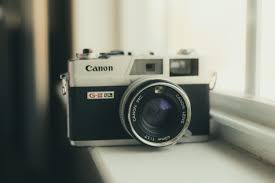Cameras have become an essential part of our lives, capturing moments, creating memories, and even fueling professional careers. But have you ever wondered how a camera actually works? Whether it’s a DSLR, a smartphone camera, or a mirrorless camera, the core principles remain the same. In this article, we’ll break down the science and technology behind cameras in a simple, engaging way.
The Basic Working Principle of a Camera
At its core, a camera is a device that captures light and converts it into an image. The process involves multiple components working together in harmony. Let’s break it down step by step:
1. Light Enters Through the Lens
The camera lens is the eye of the device. It gathers light from the scene and focuses it onto the camera sensor (or film in traditional cameras). Different lenses have varying focal lengths and aperture sizes, affecting how much light enters and how the image looks.
2. Aperture: Controlling the Light Intake
The aperture is an adjustable opening inside the lens that controls how much light enters the camera. It is measured in f-stops (e.g., f/1.8, f/2.8, f/11). A lower f-stop means a wider aperture, allowing more light in, which is great for low-light photography and achieving a blurry background (bokeh effect). A higher f-stop means a narrower aperture, increasing depth of field for sharper images.
3. Shutter Mechanism: Capturing the Moment
Behind the lens is the shutter, a small curtain-like mechanism that opens and closes to allow light to reach the sensor for a specific duration. This duration is called the shutter speed, measured in fractions of a second (e.g., 1/1000s, 1/60s, 1s).
- Faster shutter speeds freeze motion (ideal for sports and wildlife photography).
- Slower shutter speeds allow more light in (useful for night photography or motion blur effects).
4. The Sensor: Converting Light into Digital Data
The camera sensor is where the magic happens! Modern digital cameras use either CMOS (Complementary Metal-Oxide-Semiconductor) sensors or CCD (Charge-Coupled Device) sensors to convert light into electrical signals.
- CMOS sensors are more power-efficient and commonly used in smartphones and DSLRs.
- CCD sensors produce high-quality images but consume more power and are mostly found in high-end cameras.
5. ISO Sensitivity: Adjusting Light Sensitivity
ISO determines how sensitive the camera sensor is to light. A low ISO (100-400) produces cleaner images but requires good lighting. A high ISO (800-6400 or beyond) brightens the image but introduces noise (graininess).
6. Image Processing: Turning Light into a Photo
Once the sensor captures the light, the camera’s processor converts the raw data into a usable image. The processor applies adjustments like:
- White Balance: Corrects color tones based on the light source.
- Noise Reduction: Removes graininess from high-ISO shots.
- Sharpening & Contrast: Enhances details for a more visually appealing image.
7. Storage & Output: Saving Your Photos
The final processed image is stored on a memory card in formats like JPEG (compressed) or RAW (uncompressed). RAW files contain more data and allow for advanced post-processing, while JPEG files are smaller and ready to share instantly.
The Role of Autofocus & Image Stabilization
Modern cameras have autofocus (AF) systems that automatically adjust the lens to keep the subject sharp. There are two main types:
- Phase Detection Autofocus (PDAF): Fast and accurate, used in DSLRs and flagship smartphones.
- Contrast Detection Autofocus (CDAF): Slower but precise, found in mirrorless cameras and compact cameras.
Image stabilization (IS) reduces blur caused by shaky hands. It comes in two forms:
- Optical Image Stabilization (OIS): Physically moves the lens or sensor.
- Electronic Image Stabilization (EIS): Uses software to correct shakiness.
How Different Types of Cameras Work
DSLR Cameras (Digital Single-Lens Reflex)
- Uses a mirror mechanism to reflect light into an optical viewfinder.
- Features interchangeable lenses for flexibility.
- Ideal for professional photography.
Mirrorless Cameras
- Eliminates the mirror system for a more compact design.
- Uses an electronic viewfinder or LCD screen to preview shots.
- Offers excellent video capabilities and fast autofocus.
Smartphone Cameras
- Uses computational photography to enhance images with AI.
- Features multiple lenses (ultra-wide, telephoto, macro) for versatility.
- Relies on software-based image processing for high-quality results.
Conclusion: Understanding Cameras for Better Photography
Now that you know how a camera works, you can use this knowledge to take better photos! Adjusting aperture, shutter speed, and ISO correctly will help you achieve the perfect shot, whether you’re using a DSLR, mirrorless, or smartphone camera.
So next time you snap a photo, you’ll appreciate the incredible technology working behind the scenes to capture that perfect moment.
Did this guide help you understand cameras better? Let us know your thoughts in the comments!

